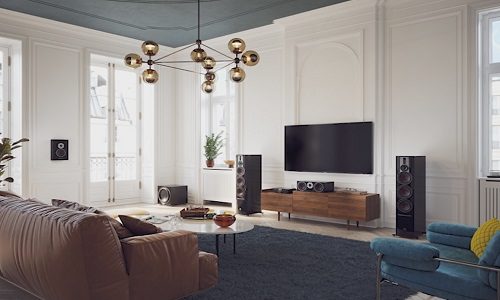Jason Zidle, brand manager for DALI Loudspeakers at Lenbrook, recently sat down with us to talk about the current market conditions surrounding home theater audio. You can watch that conversation in the video above, but below you’ll find the transcript:
CEP: What the market looking like right now for wireless and on-wall speakers, and where do you think the opportunity is for integrators who are looking to capitalize on?
Jason Zidle: Both are growing immensely, and I truly believe will continue to grow. Both offer somebody benefits for the end user and the integrator. They both offer superior performance compared to traditional CI, and perhaps most importantly, they address the desires of a new target for sit for CI people, the critical listener, the hobbyist and the new generation.
CEP: What is unique about DALI’s approach to driver technology and wireless functionality?
JZ: Most speakers are in-ceiling, and that’s a very, very busy place. And that’s very humbling for the audio guy. You know, an installer walks in with his preconstruction kids trying to do his best to stake some claim to that very busy ceiling, but to the consumer and the man doing the job, lighting, age vac, potentially even security, all these things take precedence over the in ceiling speaker.
So it’s difficult sometimes to optimize them acoustic acoustically and cosmetically. So this way, with a non wall, the integrator can actually provide their client with better performance, while even respecting their décor.
Related: The State of the Home Theater Systems Market
From a performance performance aspect, on wall is far superior, an element of speakers that really doesn’t get enough attention is the cabinet, very underestimated component. And then of course, there’s placement with on wall, you can manipulate and maximize it much more to make sure you’re getting every little bit out of it. And an element that a lot of people normally don’t speak of and Ci is it allows a hobbyist to upgrade much more easily.
You know, it’s a big dedication to cut something into your ceiling, but just taking something off your wall and maybe replacing it with something even better. What a wonderful opportunity. And that’s just an opportunity that CEI previously hadn’t been exposed to.
CEP: What advantage does wireless audio pose to the integrator in home theater situations?
JZ: It’s similar to on walls in many respects, yet to me with even more to offer a system you know, it’s a living breathing thing, it has to be balanced. And, you know, for most systems, we’d be talking about an amplifier and speakers.
And it’s not always easy to get that perfect balance. When you’re designing both. If you are designing the amplifier and the speaker, you can really create something that is greater than the sum of its parts, both from a performance aspect because you know exactly what you expect from both, but also about reliability, you know, what each is capable of. So in the long run to me, they’d actually last longer than when you try to piece together an amplifier with a given pair of speakers.
For the installer. The other advantage that I like a lot is it’s a very non invasive way of adding multi room. A multi room is a blast, everybody wants it but not everybody is perhaps ready to make the commitment to the invasive cuts, or the associated cost of intensive labor like that with powered speakers and powered solutions. This offers a new venue for the installer to really easily add sound to every room in the home, do it very non invasively and perhaps even at a cost as more customers can afford.







